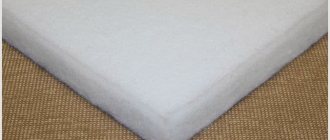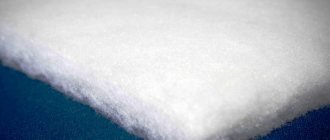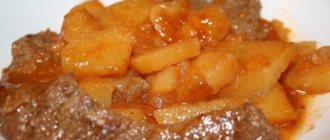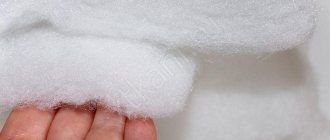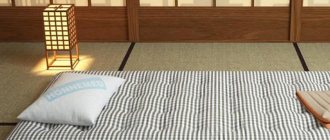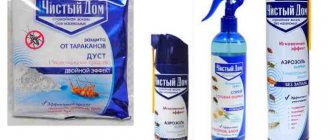With the onset of cold weather, people exchange light jackets and coats for fur coats and down jackets. In the minds of many, winter is primarily closely associated with outerwear lined with fur or stuffed with goose or eider down. However, today holofiber, which is used to fill jackets, successfully competes with conventional fillers.
Can you knit? Publish your work on knitka.ru
- interesting selection on knitka.ru!!!
- How to knit marshmallow booties for newborns, our selection
In many ways, it is not only not inferior to them, but also surpasses them in its qualities. What it is and what its features are, we will discuss below.
Isosoft
very small mass;
the ability to wash in any convenient way;
durability.
Important! Isosoft is lighter than padding polyester, and even more so than natural fluff. It perfectly repels moisture, so the jacket will not get wet even in very heavy rain. When you put on a thin down jacket with this filling for the first time, you will be very pleasantly surprised - even in severe frost it will not be cold in it. You can wash the product as you wish - manually, in an automatic machine, and even in an activator unit without any additional protection. The jacket will dry very quickly and in any position.
does not lose shape;
does not lose volume;
We suggest you familiarize yourself with the best way to wash plastic panels
does not clump together.
Important! This perfection has only one drawback - it costs almost the same as an eiderdown down jacket from a good manufacturer.
Holofiber: what temperature and weather is it designed for?
Now there is a huge amount of outerwear with holofiber on the market. This is due to the low price. A down jacket costs one and a half times cheaper than a natural one. At the same time, it is not inferior in quality. Before answering about temperature standards, it is worth deciding on the density of the filler. The minimum operating temperature also depends on this figure.
Temperature standards:
- Density 100 g/sq.m. — from +10°С to +5°С
- Density 150 g/sq.m. — from +5°С to -10°С
- Density 200 g/sq.m. — from -10°С to -20°С
- Density 300 g/sq.m. – from -20°С to -30°С
Holofiber: what temperature and weather is it designed for?
Briefly about holofiber
First of all, this filler consists of many fibers that are created in a certain way. Is it pure synthetic. The filler belongs to the group of polyesters. It is not woven or glued, unlike padding polyester. The basis is fiber, twisted (spiral-shaped). To obtain the required length, they are soldered together at high temperature.
Characteristics of artificial holofiber filler
It is believed that this holofiber material has no disadvantages. This fact is recognized by the majority of consumers and manufacturers. Holofiber is slightly inferior to poultry down in its heat capacity.
There are many advantages:
- weighs little;
- no electrolysis;
- maintains heat well;
- is inexpensive;
- not scary for allergy sufferers;
- is not saturated with foreign odors.
What kind of weather is holofiber filler designed for?
The choice of clothes with such filling today is huge. The reason for this: reasonable price and excellent heat capacity. At what temperature to wear a jacket with holofiber depends on the density of the material itself that filled the fabric. The temperature standards given below clearly indicate what you can expect and not freeze if you dress correctly.
- Density 100 g/sq.m – from +10°С to +5°С
- Density 150 g/sq.m – from +5°С to -10°С
- Density 200 g/sq.m - from -10°C to -20°C
- Density 300 g/sq.m – from -20°С to -30°С
The higher the density of the holofiber, the more severe the frost you can walk in comfort.
Sintepon and holofiber fillers: differences
The fiber from which both materials are created is the same. However, the manufacturing technology is different. In padding polyester, every thread is glued. Another property is holofiber, where the threads are welded and hollow, which gives lightness, airiness and, as a result, warmth. Synthetic winterizer is heavier and less cold resistant.
Comparison: holofiber and other types of fillers
As insulation, synthetic winterizer has disadvantages. It absorbs moisture, gets wet, and becomes heavier. Thermal insulation is average, and holofiber is an order of magnitude higher.
Down jackets are often the main competitor. Products made from natural filler are very warm. And this is undeniable, but they are expensive. If you happen to get caught in wet snow or rain, such clothes quickly get wet and are more difficult to wash and maintain in good condition. All this does not frighten holofiber, which is close to ideal.
Holofiber or padding polyester? Which filler to choose
The question arises, what is better to choose for winter coats, jackets, children's clothes and bedding. To answer this question correctly, you need to know the disadvantages of padding polyester.
Its disadvantages:
- absorbs odors;
- a bit heavy;
- low thermal insulation;
- collects moisture.
Holofiber does not have these disadvantages, which makes it more interesting to use than other synthetics. Thanks to siliconization, its fibers repel moisture. Because of this, pillows and blankets with it are preferable. These same qualities should incline in favor of holofiber when choosing a children's overalls or jacket.
Which jacket is better to choose: down or padding?
Having learned what qualities various materials have, let's see how these qualities manifest themselves in the finished product. This will help you decide what is better to choose, clothes made with padding polyester or natural down.
Down jackets filled with natural down
Main advantage
down jackets are reliable protection from the cold. Natural down makes the jacket light and very warm. Down jackets with eider, goose or duck down are best purchased by residents of northern regions where constant low temperatures are observed in winter.
In temperate latitudes, down jackets may also be needed by people who spend long periods of time outdoors.
However, these products have several disadvantages
. The main ones are the high price and difficulty of care.
Important!
Professional dry cleaning instead of washing it yourself at home will preserve the quality appearance and extend the life of the down jacket.
Advantage
synthetic padding material becomes practical and functional, at an affordable price. Winter clothes with synthetic fiber insulation also retain heat well. Their lightness and water resistance make the products most convenient for active people who do not change their lifestyle even in winter. Padded jackets provide comfort during long walks, sports, and outdoor games.
Another advantage of artificial contents is ease of care. You can wash these jackets yourself.
Flaws
winter jackets with synthetic padding are also related to the care of the product. Sintepon, which tends to bunch up when wet and washed, will force you to work hard to return products that do not have quilting to their former appearance.
Important!
To prevent the insulation from crumpling during washing, you need to place tennis balls in the drum of the washing machine along with the jacket.
Application in jackets, pros and cons
Hollow fiber is most often used when sewing down jackets. And also found in parks, classic-cut outerwear as an additional filler. Even with a small thickness, such a fabric ensures heat retention, because the material is highly dense.
To better understand what holofiber is in jackets, consider the advantages:
- Light weight. Weighs a little more than isosoft.
- Warm, and therefore used as the main insulation.
- Does not cause allergies. Unlike natural fillers, synthetic fibers can be safely used by allergy sufferers.
- Not electrified.
- Jackets with synthetic filling can be washed many times without fear that the insulation will bunch up or lose its uniformity.
- Does not absorb odors.
- Reasonable cost compared to goose down and some synthetic fillers.
Among the disadvantages of the material, one can note lower heat retention rates than that of a goose feather. But the problem is solved by using a thicker layer of filler.
A relative disadvantage of holofiber is that it does not allow air to pass through well. But most clothing manufacturers use “breathable” materials for sewing winter jackets, which compensates for this disadvantage.
What is warmer and better: holofiber or padding polyester, artificial and natural down?
Synthetic winterizer is not the best insulation, as it gets wet and accumulates moisture. At the same time, the material has a low thermal insulation rate. It is an order of magnitude higher than holofiber.
Natural down is a competitor to holofiber. Products made from it are as warm as possible. But down has one huge drawback - the price. In addition, down gets wet in rainy weather. There are also some difficulties when washing down jackets with natural feathers. If we take into account all these indicators, then holofiber is an ideal option.
What is warmer and better: holofiber or padding polyester, artificial and natural down?
Holofiber or down
Which of these insulation materials is better? Many people ask this question, because both options have advantages. There are a lot of winter clothes on the market with both synthetic and natural fillers.
As mentioned above, swan down is warmer than synthetic insulation. But here you need to take into account the composition of the natural filler. Feather ideally occupies less than 40% of the total mass, and the remaining 60% is down. Unfortunately, modern manufacturers save money without guaranteeing such a ratio.
Now about the disadvantages. Jackets with natural filling cause difficulties during washing, so it is better to send such clothes to dry cleaning. In addition, down products are contraindicated for allergy sufferers. Add the high cost to these disadvantages, then draw your conclusions.
Sintepon: affordable heat
Synthetic winterizer is a lightweight, elastic, voluminous non-woven synthetic insulation material that has been successfully replacing natural materials such as down, feathers and sheep’s wool for several decades.
The technological process for producing padding polyester is based on bonding polyester fibers into a homogeneous fabric in one of three ways:
- Adhesive, using a latex composition.
- Needle-punched - on machines with special equipment.
- Thermal - under the influence of high temperatures.
The latter method is considered the most effective, since the canvas becomes especially durable and dimensional stable. The insulation obtained as a result of thermal soldering is called Eurosynthepon.
The density scale of padding polyester fabrics is quite large - from 40 to 1500 g/cm3. To insulate various products, they are laid out in layers and fastened together.
Synthetic winterizer is a popular insulation material because it has a number of positive properties:
- light weight compared to wool insulation and batting;
- resistance to various deformations;
- high thermal insulation qualities;
- low hygroscopicity;
- low melting point.
What is holofiber
Previously, the most common type of synthetic insulation was synthetic winterizer. It is still used in light industry today, only in much smaller volumes, because other types of fillers have appeared.
Hollofiber is a synthetic fiber that belongs to the group of polyesters. The structure of the filler is reminiscent of padding polyester or padding polyester, but is produced without the use of adhesives. Its main components are spiral-shaped silicone fibers. Under the influence of high temperatures they are soldered, obtaining large canvases.
Due to its softness and minimal weight, holofiber is used in the production of pillows, blankets, and mattresses. In addition, the material is very warm, durable, and unpretentious to use.
Is it possible and how to wash holofiber in a washing machine?
Yes, products made from this filler can be safely machine washed. In this case, it is worth taking into account the features of the upper fabric. After all, holofiber can be washed even at a temperature of 80 °C. But due to the fact that down jackets are dyed and made of raincoats, the optimal washing temperature is 40 °C. At the same time, the products can be wrung out, because holofiber straightens out perfectly after washing and spinning. It doesn't need to be shaken off like fluff.
You can wash not only down jackets, but also blankets, pillows and bedspreads with holofiber. These are the products that can get dirty. Only now there is no need to take them to dry cleaning. You can wash it yourself in a washing machine.
Is it possible and how to wash holofiber in a washing machine?
Holofiber is an excellent filler that will serve as an excellent alternative to natural fluff. It's just as warm, but much cheaper.
Where to buy holofiber?
Holofiber filler is used not only for outerwear, but in handicrafts for stuffing toys; pillows, blankets, decorative elements for a crib, etc. are made from it. Therefore, many needlewomen are interested in the important question: where is it profitable to buy holofiber?
Here is a list of the main places:
- any handicraft store, in big cities it’s Leonardo or Igolochka
- Wildberries, Ozone and other online stores, as a rule the prices there are better than in specialized ones
- Aliexpress! This is an unexpected place; we recently discovered it. Aliexpress has a lot of craft supplies. You can also buy holofiber filler there
- Ikea, in the discount department, sells pillows tightly stuffed with holofiber for 30-40-50 rubles.
Holofiber is an excellent modern synthetic filler with a lot of advantages and a minimum set of disadvantages.
